Tughra Silver Collection
Its rarity in nature and its soft metal feature that allows it to be processed easily also enrich the shaping and decoration methods. Casting, forging, embossing (repouss), carving, sinking, scraping etc.
In addition to its use as an ornamental element since ancient times, it was also used in the production of household appliances. Silver works with a distinctive bright white color are still carefully preserved in palaces, museums and private collections today. Due to the fact that gold is much more expensive, the Islamic belief considers the use of expensive metals a sin, etc., silver workmanship developed and found a more widespread use in the Ottomans compared to gold.
Especially in the production of silverware that met the demands of the palace and its circle, very competent masters were trained.
Silver works, which have a wide area of use and an art market, were stamped with the signature of the sultan of the period on the work in order to prevent the customer from being deceived by low-carat or fakes. In addition, a sample called çeşni, which was taken from the surface of the work by scratching it, was checked at the mint, and if it was 900-carat silver, the work was stamped with the "sah" (sahi) stamp. In the 16th and 17th centuries, the Ottomans applied simpler forms and moderate ornaments to metal works, as in every branch of art. Starting from the 18th century, the Western influence, which gradually became stronger, also showed itself in Ottoman metal works, and silver art was no exception. In the 18th and 19th centuries, some of the works, where Baroque and Rococo influences were seen, were under Ottoman influence.
The Orientalism movement, which was created by blending Chinese, Indian, Japanese, Magrila, Andalusian, Seljuk, Mamluk and Ottoman styles from the second half of the 19th century, was also reflected in Ottoman silver works. This movement found application in every field from architecture to small handicrafts.
The Art Nouveau style, which lasted from the late 19th century to the first quarter of the 20th century, was equally influential. These last two styles originated in the East but were tastes created by the West.
Among the household items that were a part of the daily lives of the Ottomans, especially those related to the kitchen and table, lighting and heating equipment had a very special place. These items called “Evani”, made of silver, started to form long lists in the dowries of especially the upper classes.
Trays, plates, pans, basins and ewers, coffee sets, dessert sets, censers and rose water burners, sherbet jugs, candlesticks, lamps and lanterns, chairs, mirrors, sewing and jewelry boxes, lecterns…
It was created by summarizing from the book of Abdüllaziz Bey named “Ottoman Customs, Ceremonies and Expressions” and “Behice Sultan’s Dowry and Provisions Notebooks” in the TSM archives. (Behice Sultan, 1848-1876. She was the daughter of Sultan Abdülmecid from his third wife Nesrin Hanım.) It is known how rich the culinary culture was in the Ottomans. In parallel with this, many different types of dishes were produced for various uses, and eating and drinking became a pleasure beyond meeting a need.
In a notebook dated h.953 (1552) in the TSM Archive, hundreds of gold and silver evani that were solely under the responsibility of the "Head of the Storehouse" are recorded. Specially shaped containers called "karlık" were made for the snow and ice that were collected in the winter and stored in wells or brought from Uludağ and placed on the fruits in the summer heat and cooled the sherbets.
Sherbet jugs are also the product of this taste. Sherbet, in particular, was consumed abundantly on all kinds of celebrations, Mawlid, etc. days, as it was one of the beverages not prohibited in the Islamic faith. It had an important place in the treats offered to the guests.
In order to fulfill the obligation of ablution brought by Islam and to provide hygiene at every moment of daily life, basin-pitcher sets were produced. One of the most important features of these sets is the "Basin Strainer" placed in the middle, which prevents water from splashing around and prevents dirty water from being seen.
Choosing the most beautiful items such as candlesticks, oil lamps, and lanterns made for illumination was also a status symbol. Also, 'light' was sacred in the Islamic faith, as in many other religions.
Another tradition developed in relation to beliefs was to cook and distribute "ashure". Ashure was made on the 10th day of the month of Muharram in memory of the martyrdom of Hz. Hussein, the grandson of Hz. Muhammad, in Karbala. Ashure was usually served in special pitchers with lids. European and Ottoman work made of porcelain.
Emine Bilirgen Topkapi Palace Museum Treasury Department Specialist
RAFFI ORANGE
Nisantasi 5 February 2010
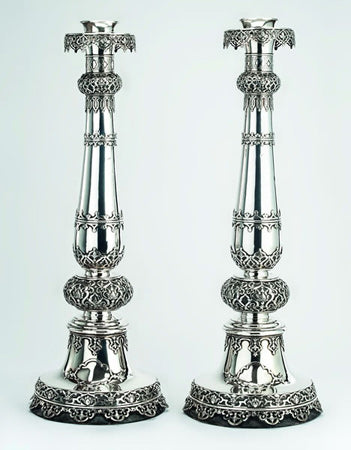
Tughra Silver Collection
A PAIR OF CANDLESTICKS SULTAN II. ABDULHAMID
Boyut : Weight: 12.570 gr. Height: 100 cm.
Sergi : Tughra Silver Collection
CATALOGUE NOTES
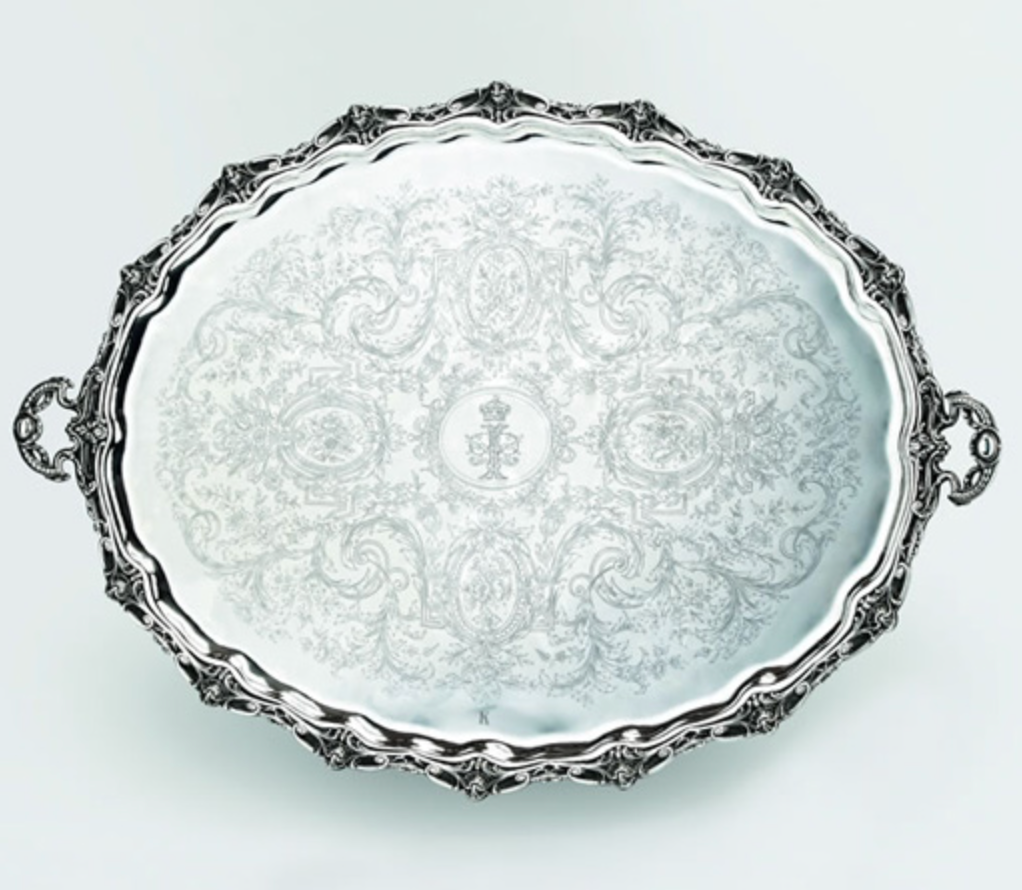
Tughra Silver Collection
FRENCH SILVER OVAL TRAYEGYPTIAN KHEDIVE ISMAIL PASHA
Boyut : Weight: 13.483 gr. 86 x 125 cm.
Sergi : Tughra Silver Collection
CATALOGUE NOTES
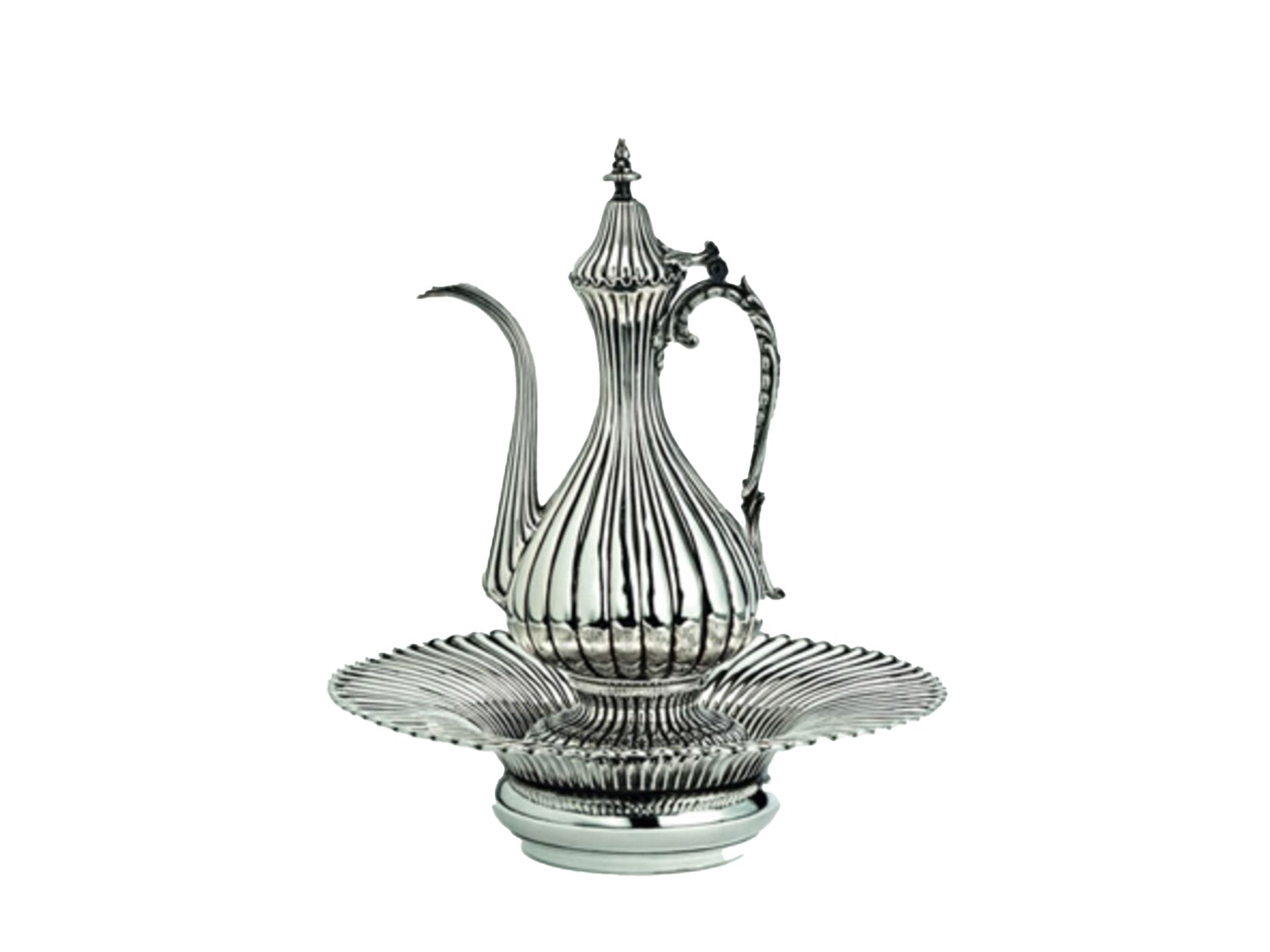
Tughra Silver Collection
BASIN-PITCH AND SOAP DISH SULTAN II. ABDULHAMID
Boyut : Weight: 3.116 gr. Height: 47.5 cm. Diameter: 40 cm.
Sergi : Tughra Silver Collection
CATALOGUE NOTES
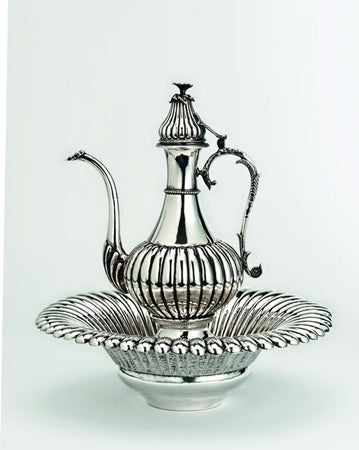
Tughra Silver Collection
BASIN-PITCH AND SOAP DISH SULTAN II. ABDULHAMID
Sergi : Tughra Silver Collection
CATALOGUE NOTES
Weight: 2.766 gr. Height: 45 cm. Diameter: 40.5 cm.
Coal
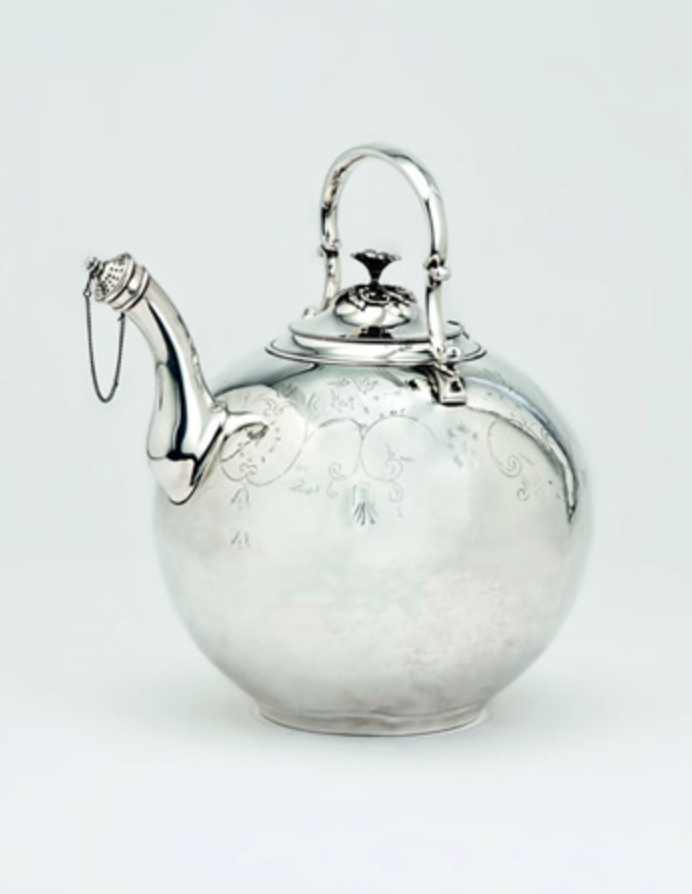
Tughra Silver Collection
KARLIKSULTAN ABDULAZIZ
Boyut : Weight: 2,470 gr. Height: 33 cm.
Sergi : Tughra Silver Collection
CATALOGUE NOTES
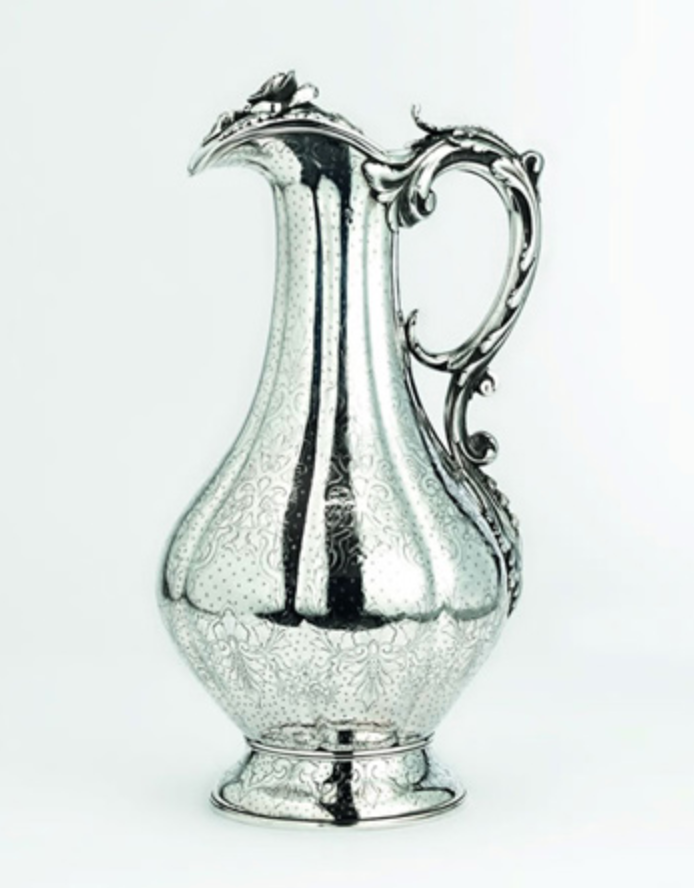
Tughra Silver Collection
ASHURELIKSULTAN II. ABDULHAMID
Boyut : Weight: 6,600 gr. Height: 51 cm.
Sergi : Tughra Silver Collection
CATALOGUE NOTES

Tughra Silver Collection
KARLIKSULTAN ABDULAZIZ
Boyut : Weight: 1.402 gr. Height: 19 cm.
Sergi : Tughra Silver Collection
CATALOGUE NOTES
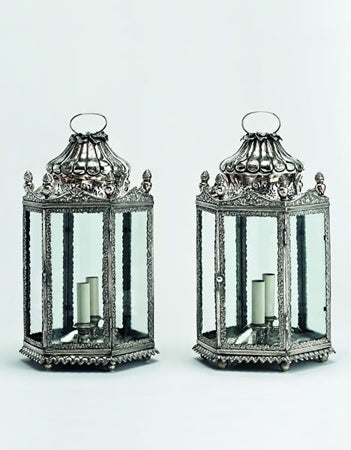
Tughra Silver Collection
A PAIR OF FENERSULTANS II. ABDULHAMID
Boyut : Height: 49cm.
Sergi : Tughra Silver Collection
CATALOGUE NOTES
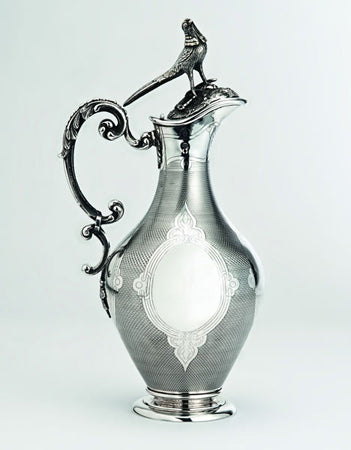
Tughra Silver Collection
SILVER ASHURE DISH WITH SIGNATURE SULTAN ABDULAZIZ
Boyut : Weight: 2.915 gr. Height: 44 cm..
Sergi : Tughra Silver Collection
CATALOGUE NOTES
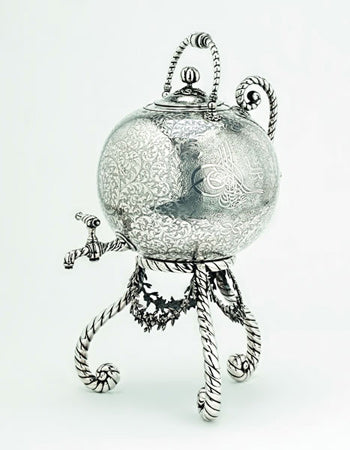
Tughra Silver Collection
SILVER SHARBET BOWL WITH SIGNATURE AND PEDESTAL SULTAN II. ABDULHAMID
Boyut : Weight: 4.314 gr. Height: 56 cm.
Sergi : Tughra Silver Collection
CATALOGUE NOTES
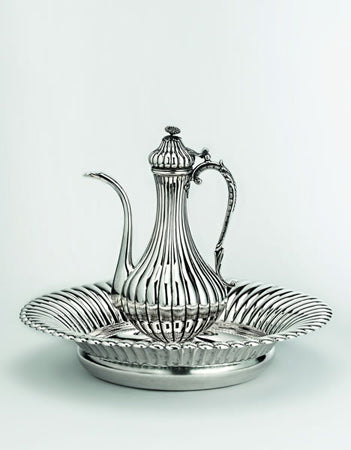
Tughra Silver Collection
SILVER BASIN-EWER WITH SIGNATURE SULTAN II. ABDULHAMID
Boyut : Weight: 7.690 gr. Height: 50 cm. Diameter: 57 cm.
Sergi : Tughra Silver Collection
